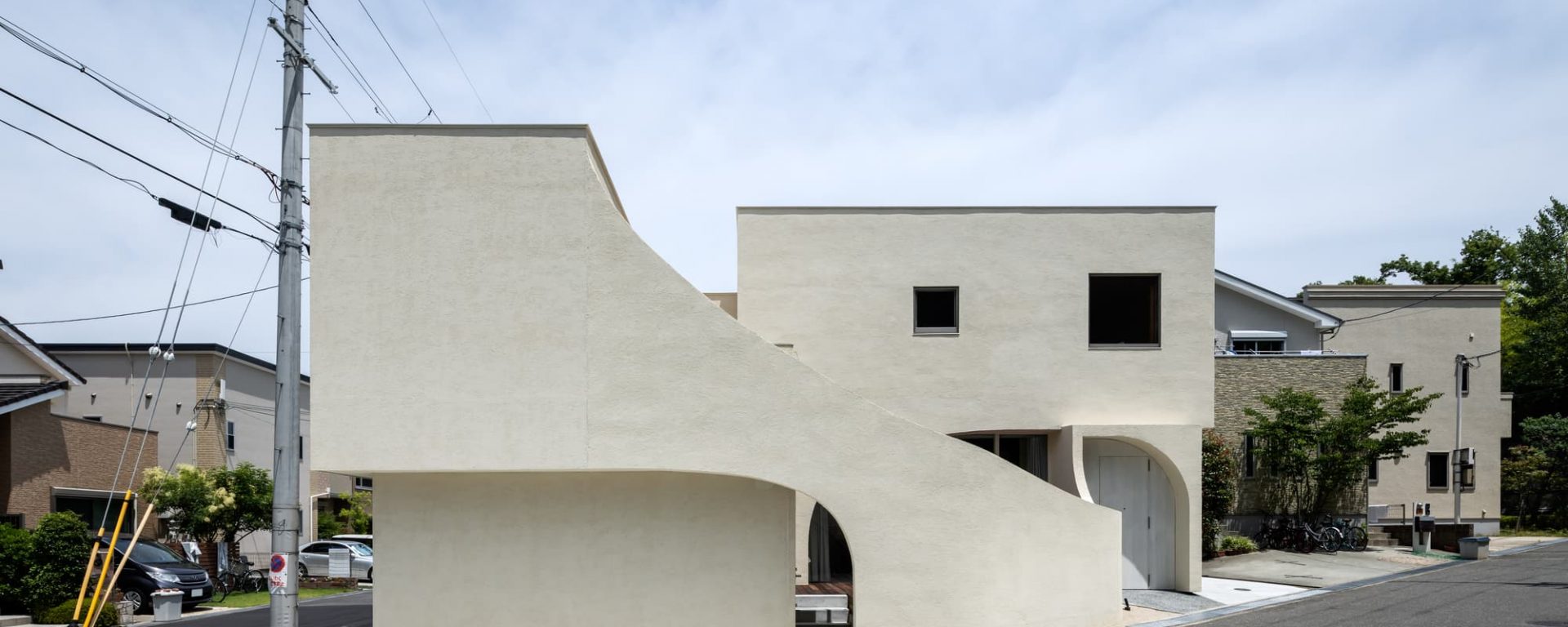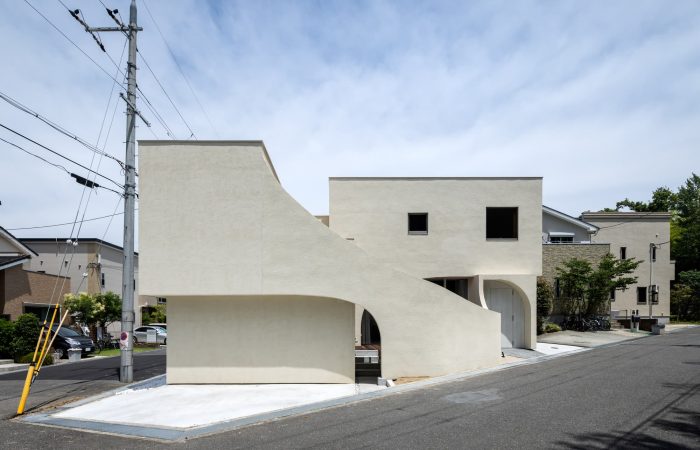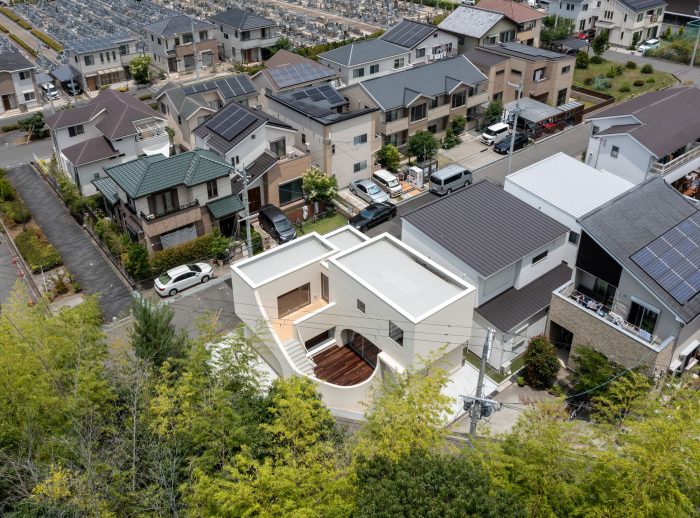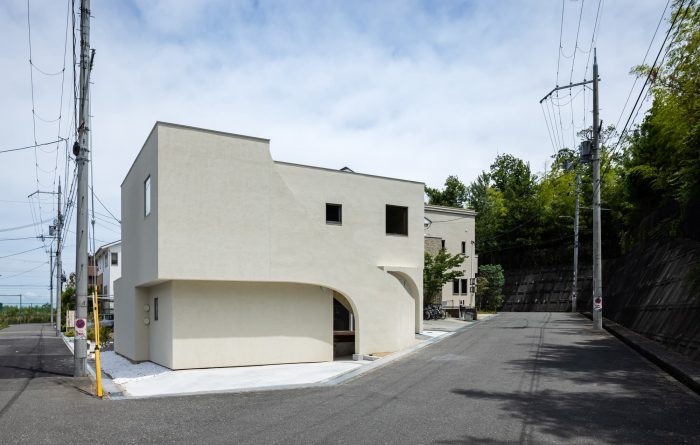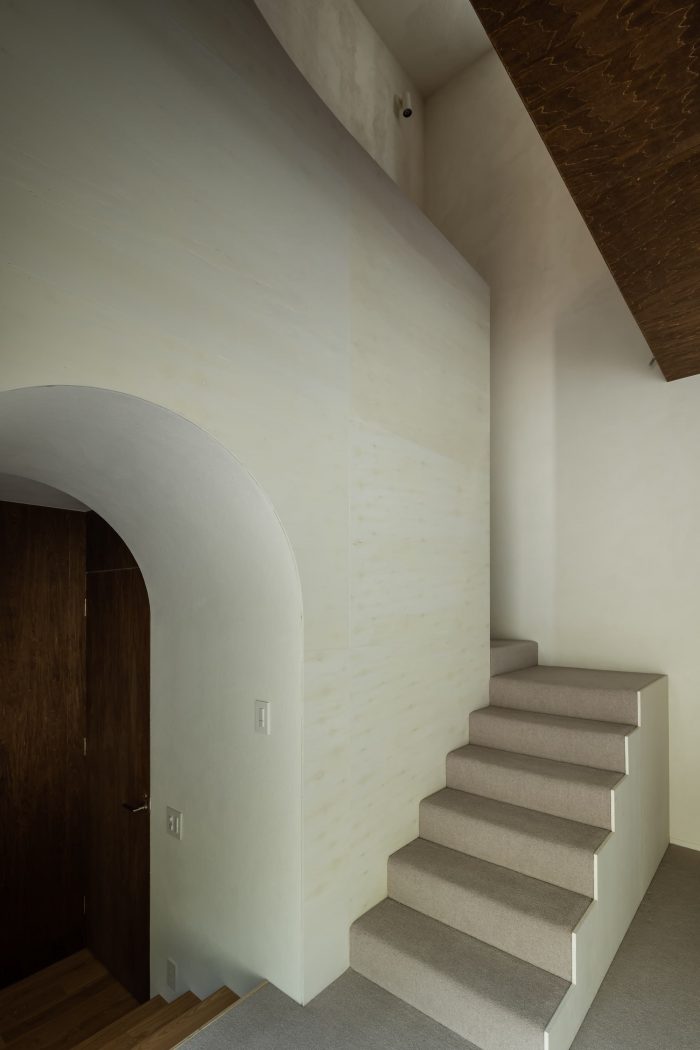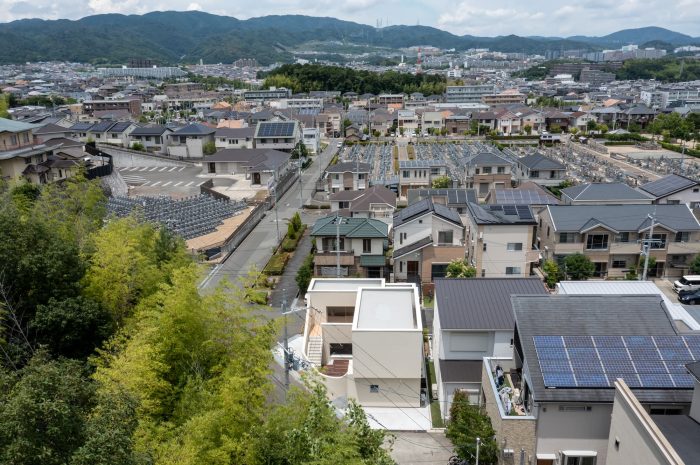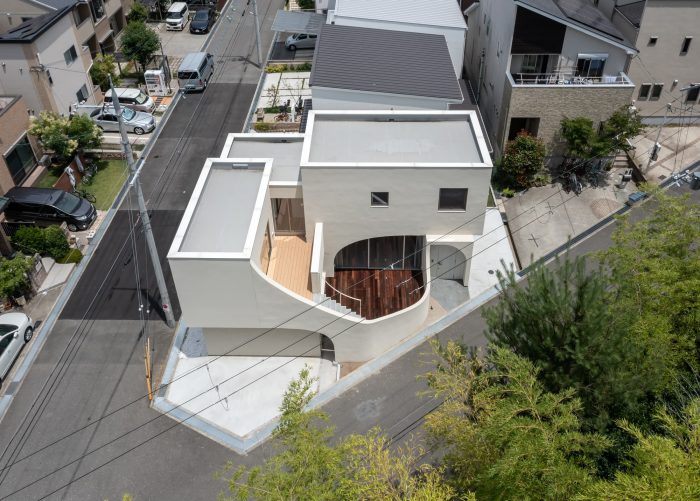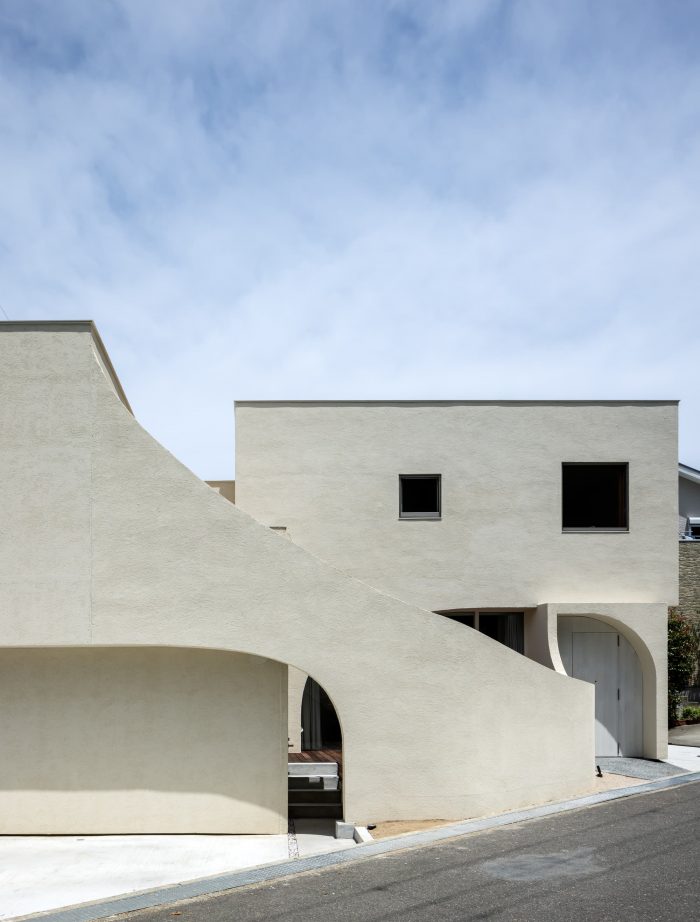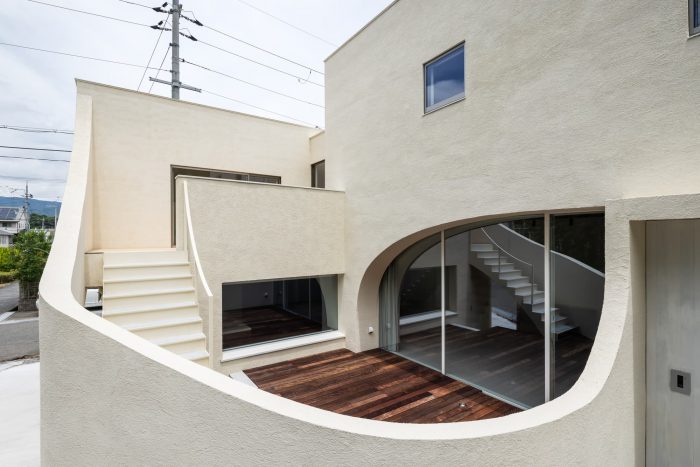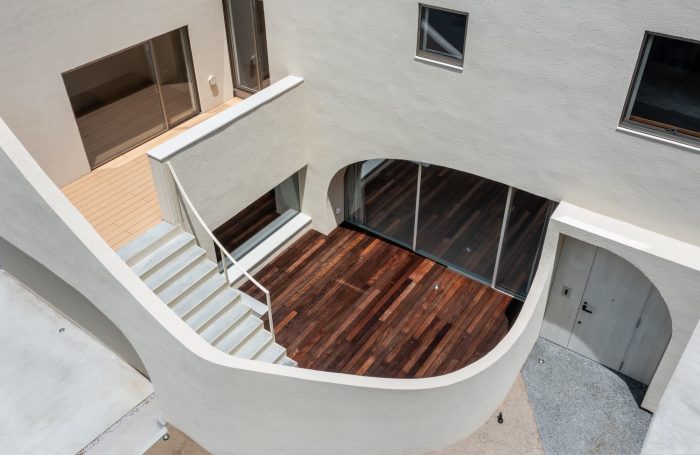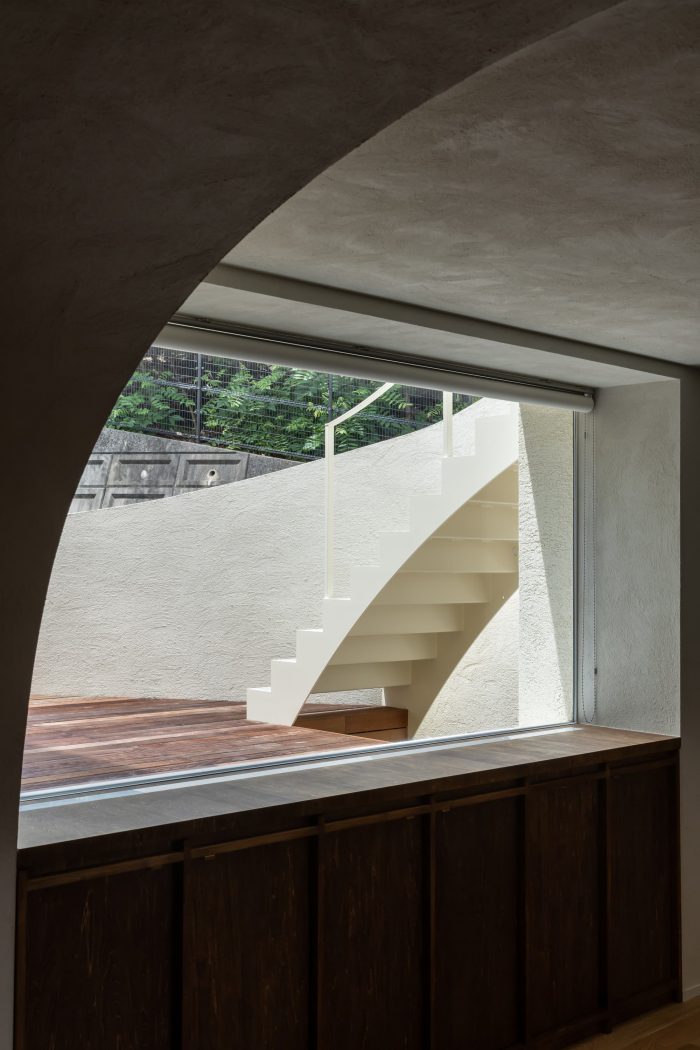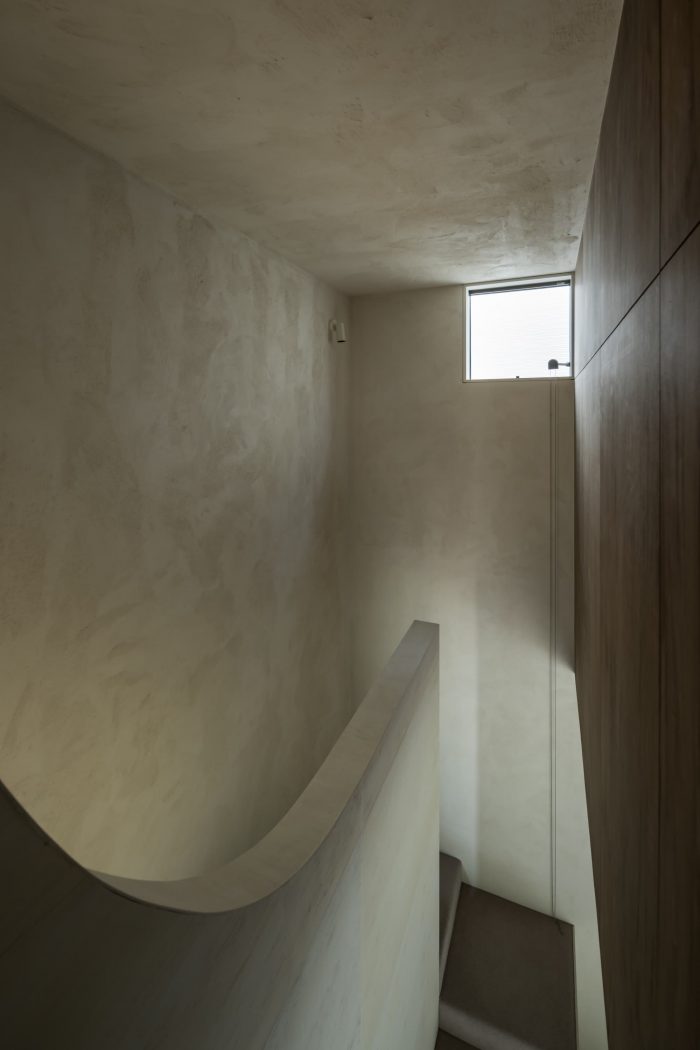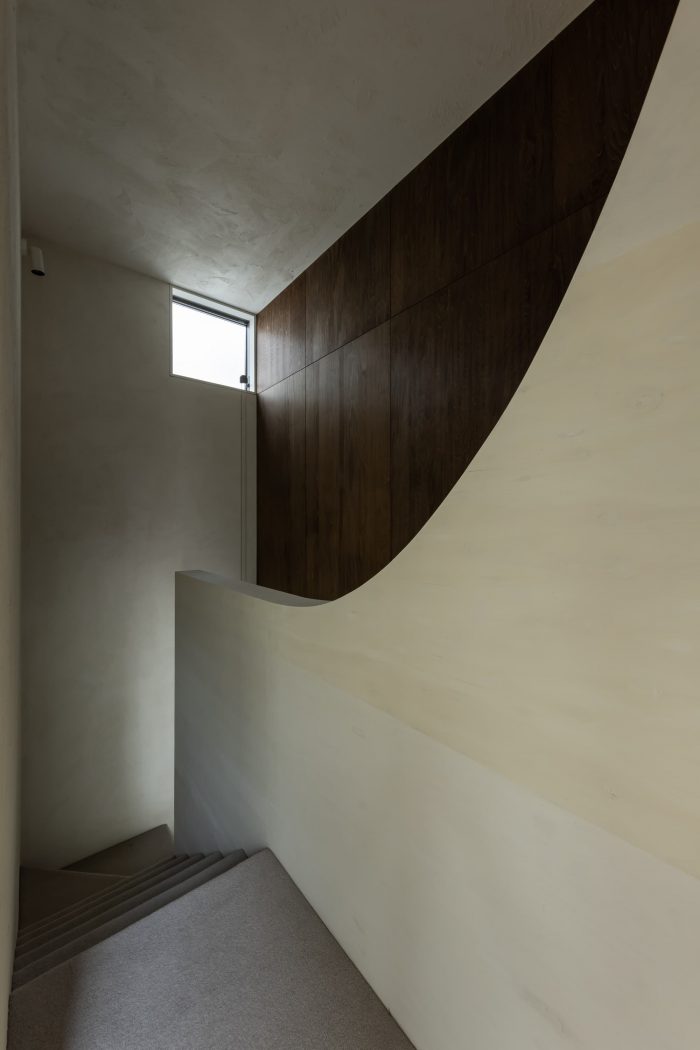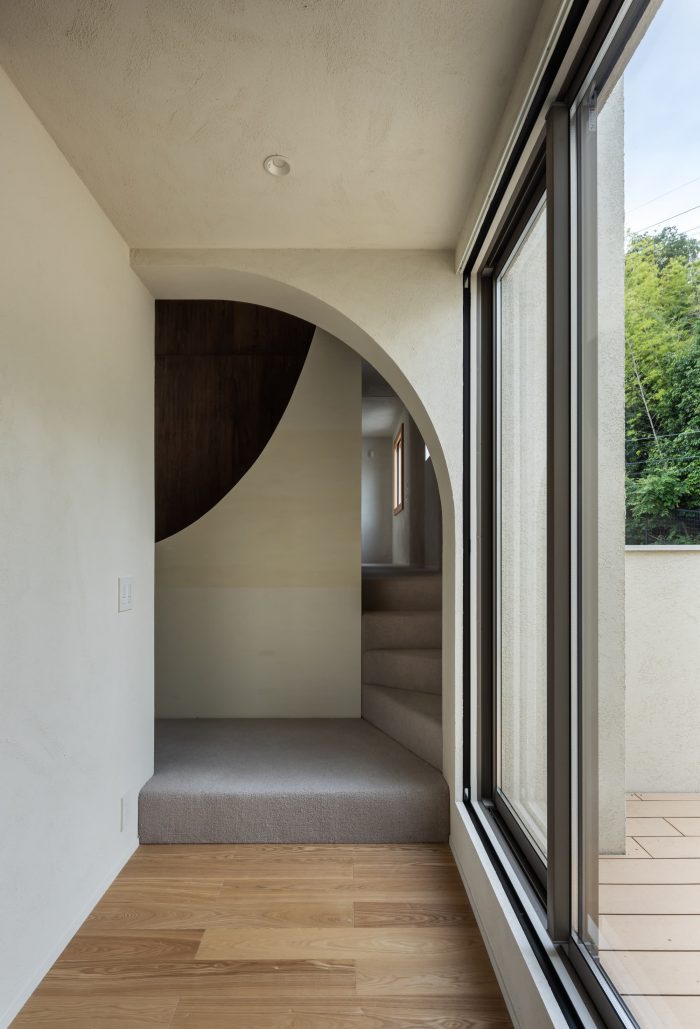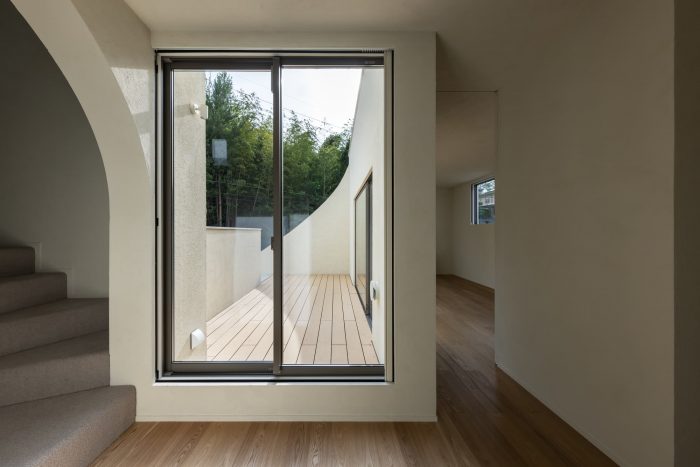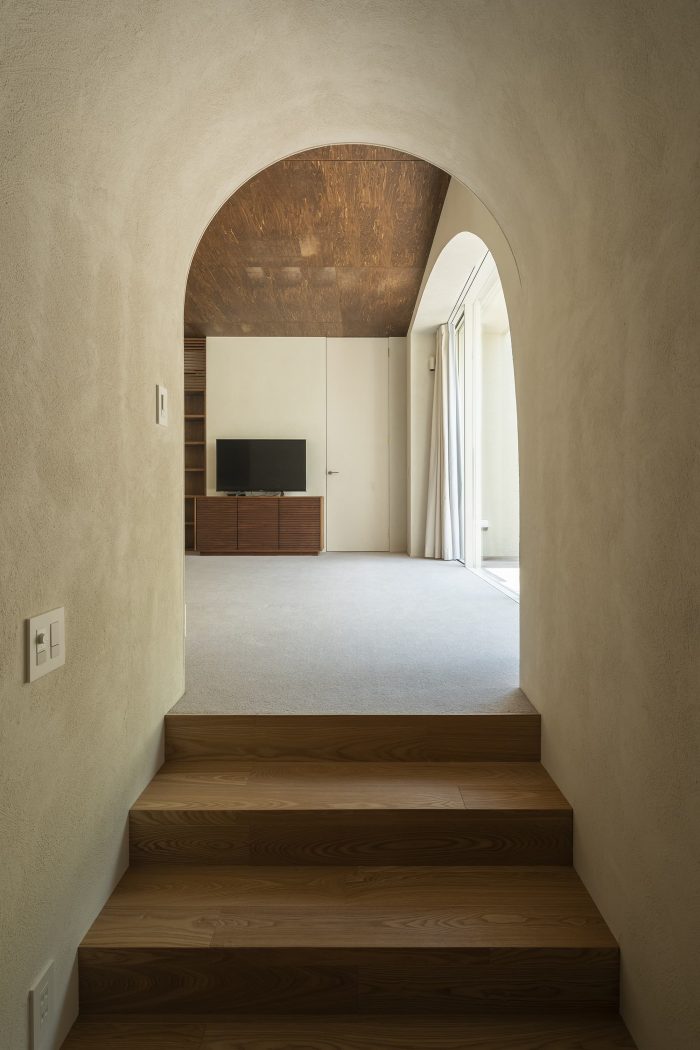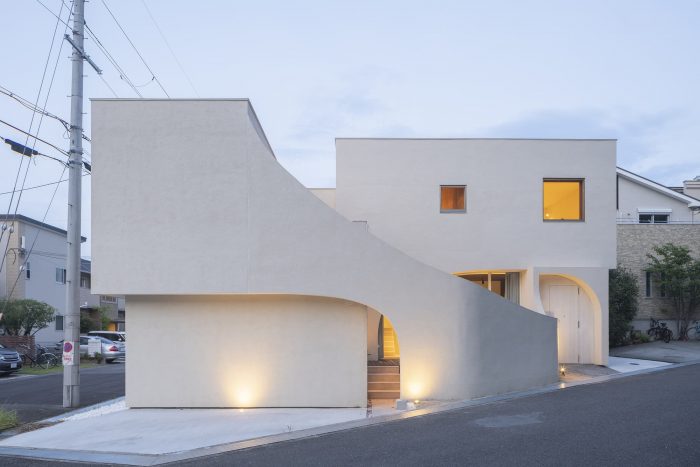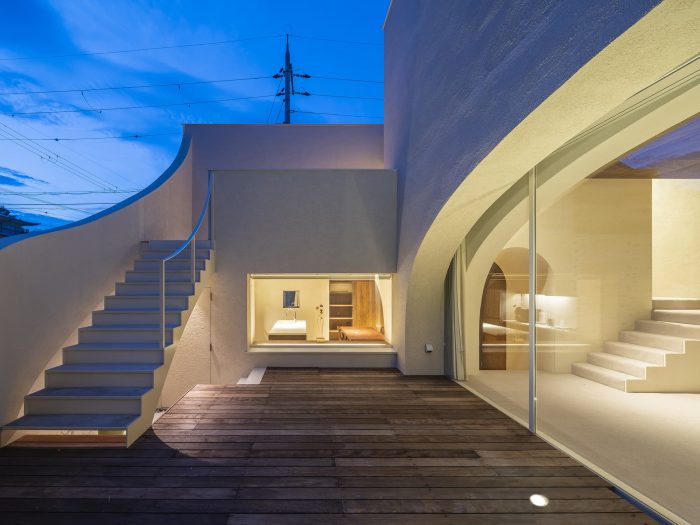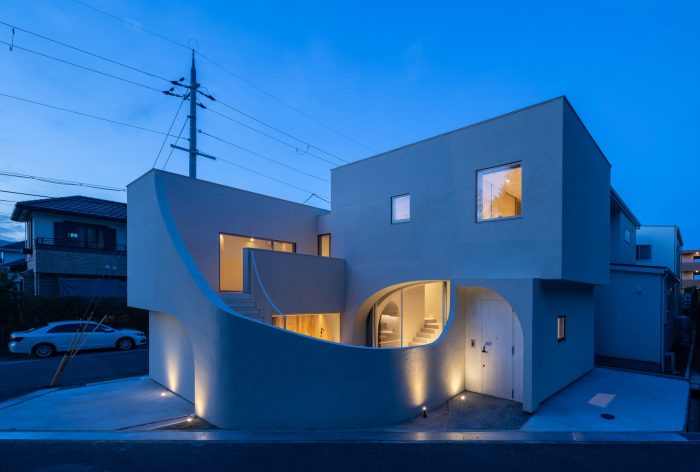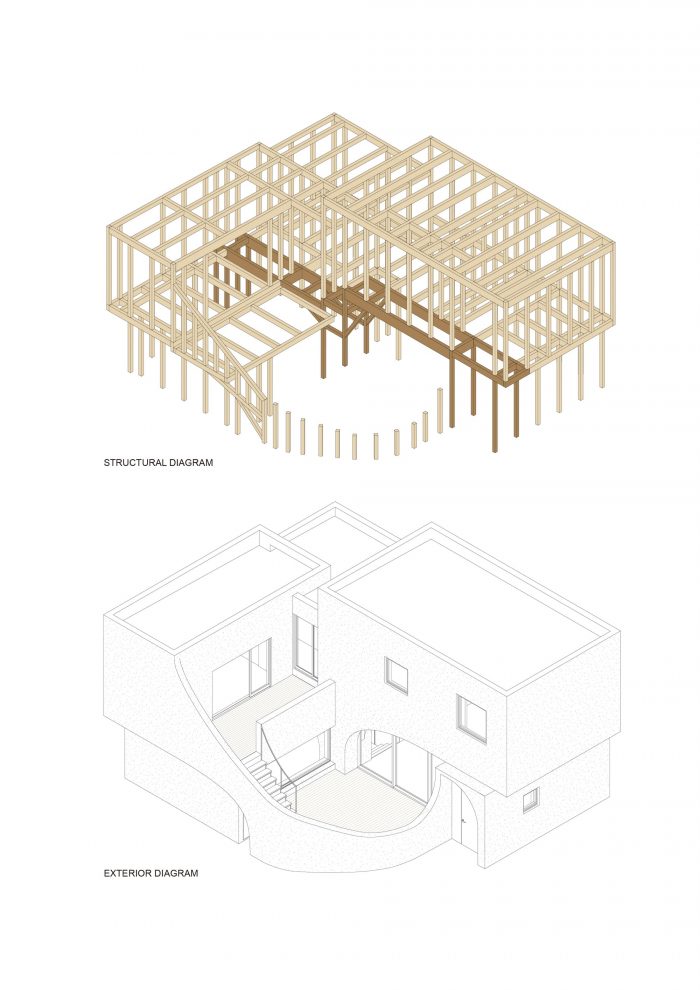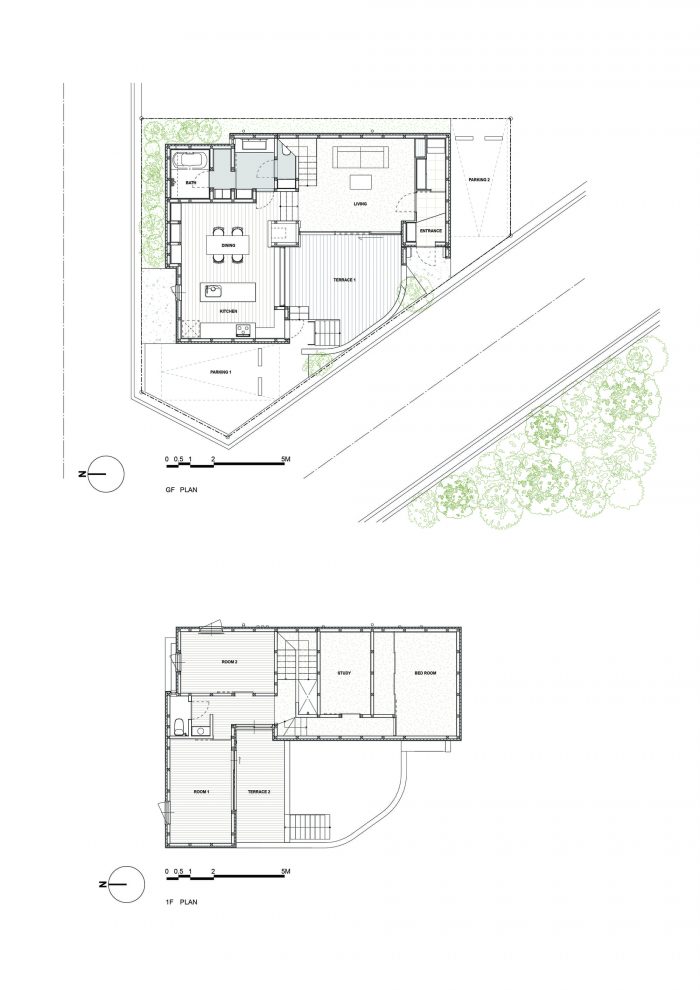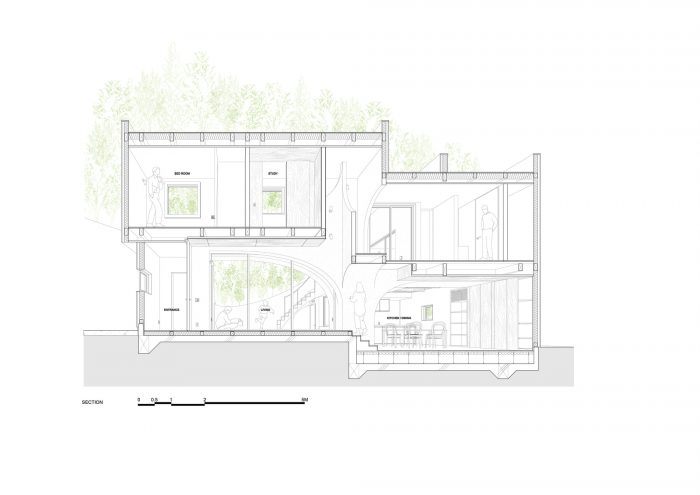这是一个为一对已婚夫妇和他们的孩子准备的住房项目,位于一个安静的住宅区的边缘。该地块是在1970年大阪世博会后的经济高速增长时期开发的,一直以来都没有任何建筑。西侧毗邻森林,是一个热闹的社区公园的一部分,这使整个房子有一种与自然相连的感觉。主要的挑战是要确保与周围的绿色植物建立和谐的关系。
This is a housing project for a married couple and their children, located on the edge of a quiet residential area. The site was developed after the 1970 Osaka Expo during a period of high economic growth and has always been empty of any buildings. The west side is adjacent to the forest that is part of a lively community park which provides a sense of being connected to nature through the whole house. The main challenge was to make sure to build a harmonious relationship with the surrounding greenery.
该地块呈三角形,其长边面向森林,设计成L型的两层体量,在地块中央有一个露台,确保从房子的任何地方都可以看到森林。
The site has a triangular shape and its long side faces the forest, designed as a two-story volume in an L shape and a terrace in the centre of the plot, making sure the forest can be seen from anywhere in the house.
此外,在房子的中心设计了一个循环楼梯环,以连接1楼的起居室和用餐区的水平差异,这个差异来自于现有的场地高度差异。在露台上还有一个外部楼梯,以便将两者连接起来。
In addition, a circulation staircase loop is designed in the centre of the house to connect the level difference in the living and dining areas on the 1st floor that comes from the existing height difference of the site. There is one more exterior staircase on the terraces in order to have both connected.
至于房子的骨架,建筑规划有一个L型的布局,有一个大的开口和中庭,从结构上看,从中心柱的纵向方向上建造一个带有支杆的龙骨梁是合理的。因此,我们决定用流体花键弧形板覆盖龙骨梁的支杆,创造一个弧形墙。此外,我们想在周围引入弧形墙,不仅在中央楼梯,而且在露台的围栏和邻近外部楼梯扶手的墙壁中也引入弧形墙。
As for the skeleton of the house, the architectural plan has an L-shaped layout with a large opening and atrium, structurally it makes sense to construct a keel beam with a strut in the longitudinal direction from the central column. Therefore, we have decided to create a curved wall by covering the strut of the keel beam with fluid spline-curved plates. Furthermore, we would like to introduce curved walls around and not only in the central staircase, but also in the fence of the terrace and in the wall adjacent to the handrail of the external staircase.
因此,注重与绿化的关系,建筑配置、施工方法、材料以及各种景物本身,都为建筑内部提供了三维的流动性和弧形墙面,实现了房屋与周围环境的协调设计。
Thus, focusing on the relationship with greenery, the architectural configuration, construction methods, materials, and a variety of scenery itself, has provided a three-dimensional fluidity and curved walls within the building that has achieved a harmonized design of the house with the surrounding environment.
Architects: Daisuke Ibano, Ryosuke Fujii
Year : 2022
Photographs :Yohei Sasakura, Shinkenchiku-sha
City : Osaka
Country : Japan

